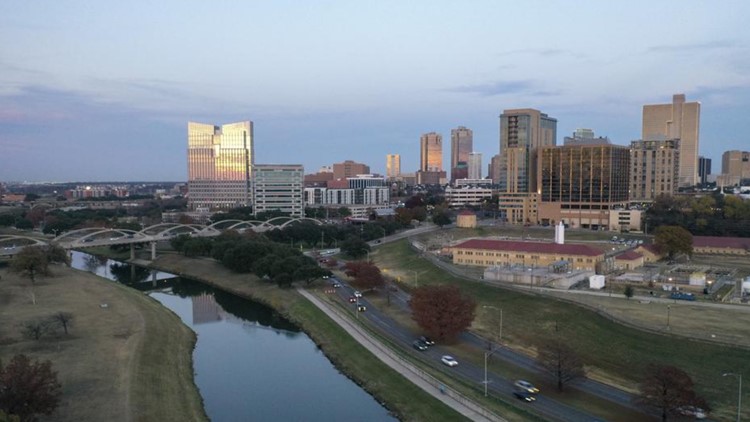DALLAS — Read this story and more North Texas business news from our partners at the Dallas Business Journal
Much has been made of the breakneck growth on the east side of the Dallas-Fort Worth Metroplex. But the west side is putting up some shocking numbers as well.
Denton County added an estimated 29,943 people between July 1, 2022 and July 1, 2023, according to new U.S. Census Bureau data. That ranked No. 6 in the United States for pure numeric increase and equates to about 82 people per day.
Tarrant County, centered on Fort Worth, added 27,301 people, which was good for No. 9. That's about 75 people per day.
Those figures include both natural population increases — births minus deaths — and migration.
The new data reflects the region’s continued growth. Fort Worth was one of the fastest growing cities in the nation between 2021 and 2022, according to census data. The trend has really gained steam recently, said Lloyd Potter, the Texas state demographer.
All that growth results in outward pressure. Counties surrounding Tarrant have more available land to develop for housing, at a cheaper cost, he said.
"As there becomes less residential opportunities in Tarrant County and as the price of housing goes up in Tarrant County, there's pressure for people to look out into the suburban ring counties,” Potter said. “And that would be, certainly, Denton, Parker and Johnson [counties].”
The median home price in Tarrant County was $344,586 in February, compared with $339,900 a year prior, according to data from the Texas A&M University Real Estate Research Center. In Denton, it was $443,500. Parker and Johnson counties were at $483,000 and $348,811, respectively — but that's the cost of completed housing, not raw land.
Dallas County, on the other hand, ranked No. 8 in the country for the outflow of people, with a net loss of 34,330 people.
Some factors influencing the outflow might be more people working remotely and higher housing prices in the county, Potter said.
"It's probably a factor that people don't have to drive into downtown Dallas to work anymore,” he said. “So they're kind of less attached to physically being in Dallas County.”
The Dallas-Fort Worth metro as a whole added more residents than any other metropolitan area in the country between July 2022 and 2023, adding 152,598 people, with its population surpassing 8 million. Collin County, north of Dallas, ranked No. 2 in growth in the nation, adding 36,364 people. Kaufman and Rockwall counties, east of Dallas, led the nation in growth rate at 7.6% and 6.5%.



